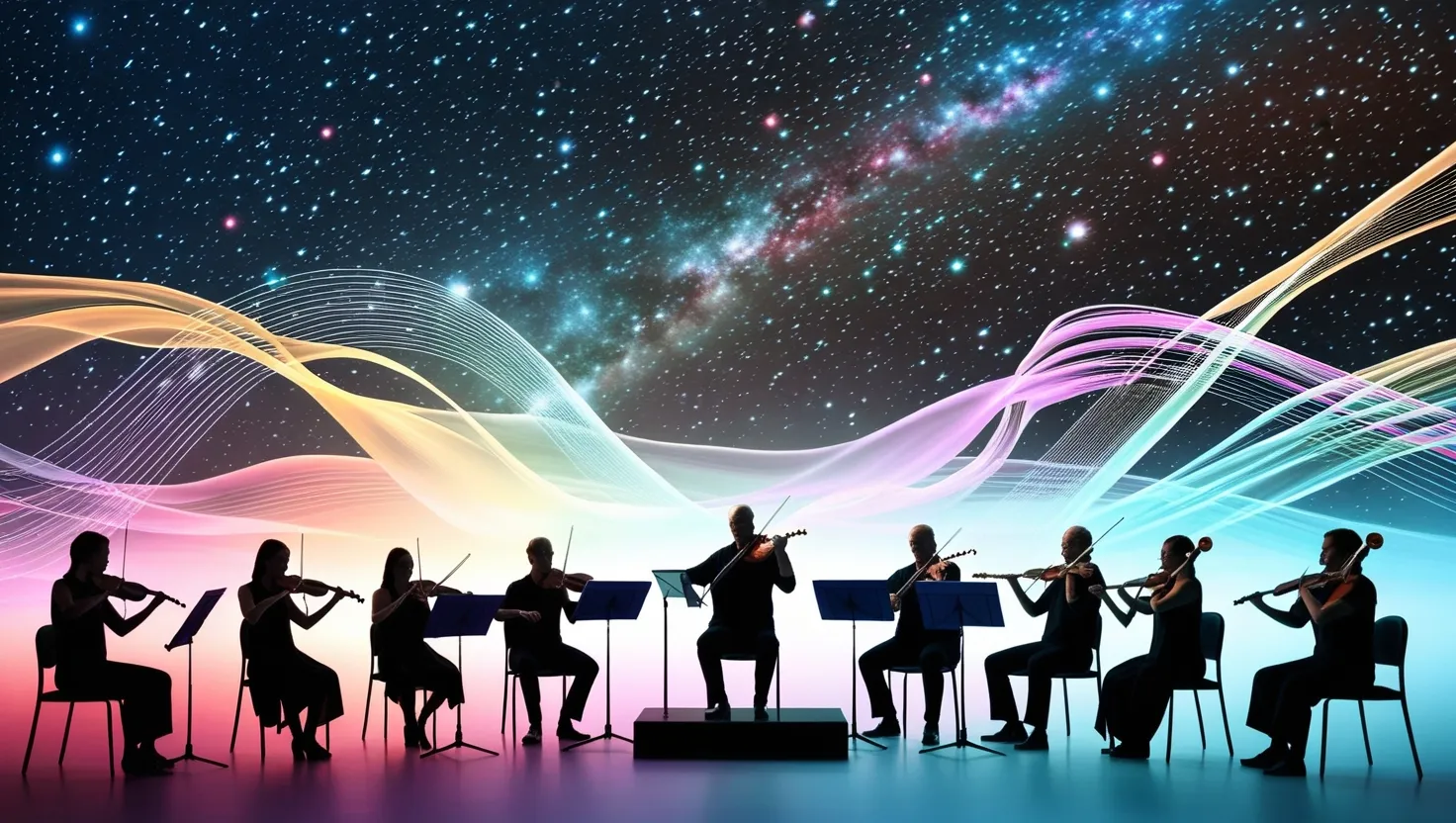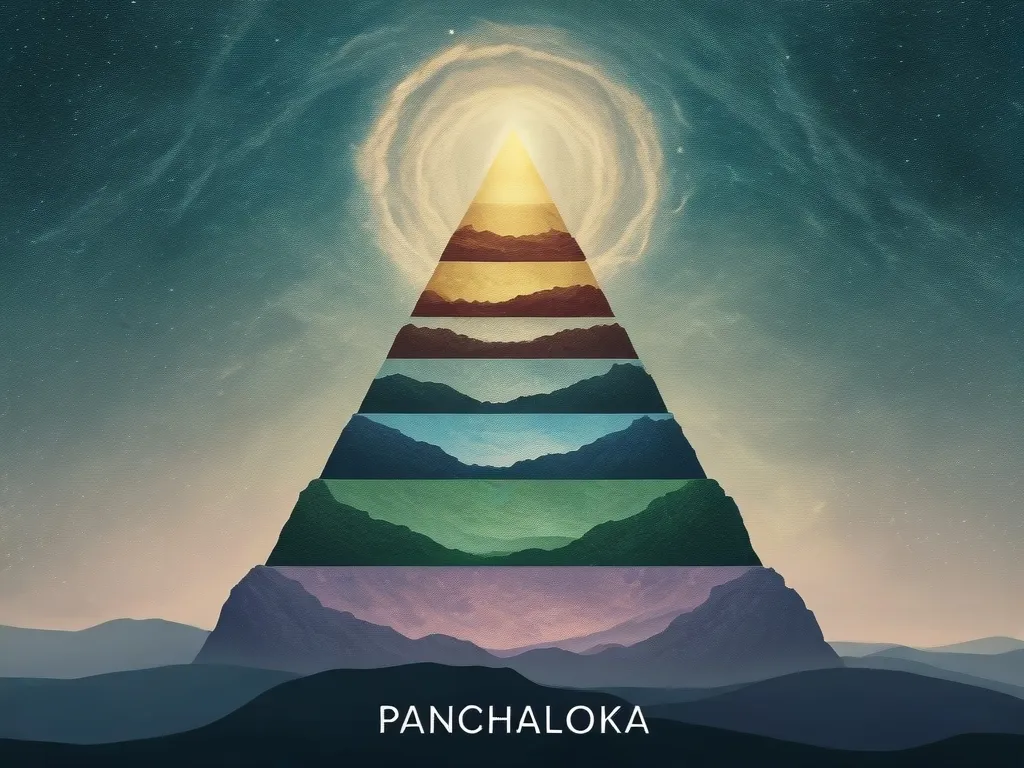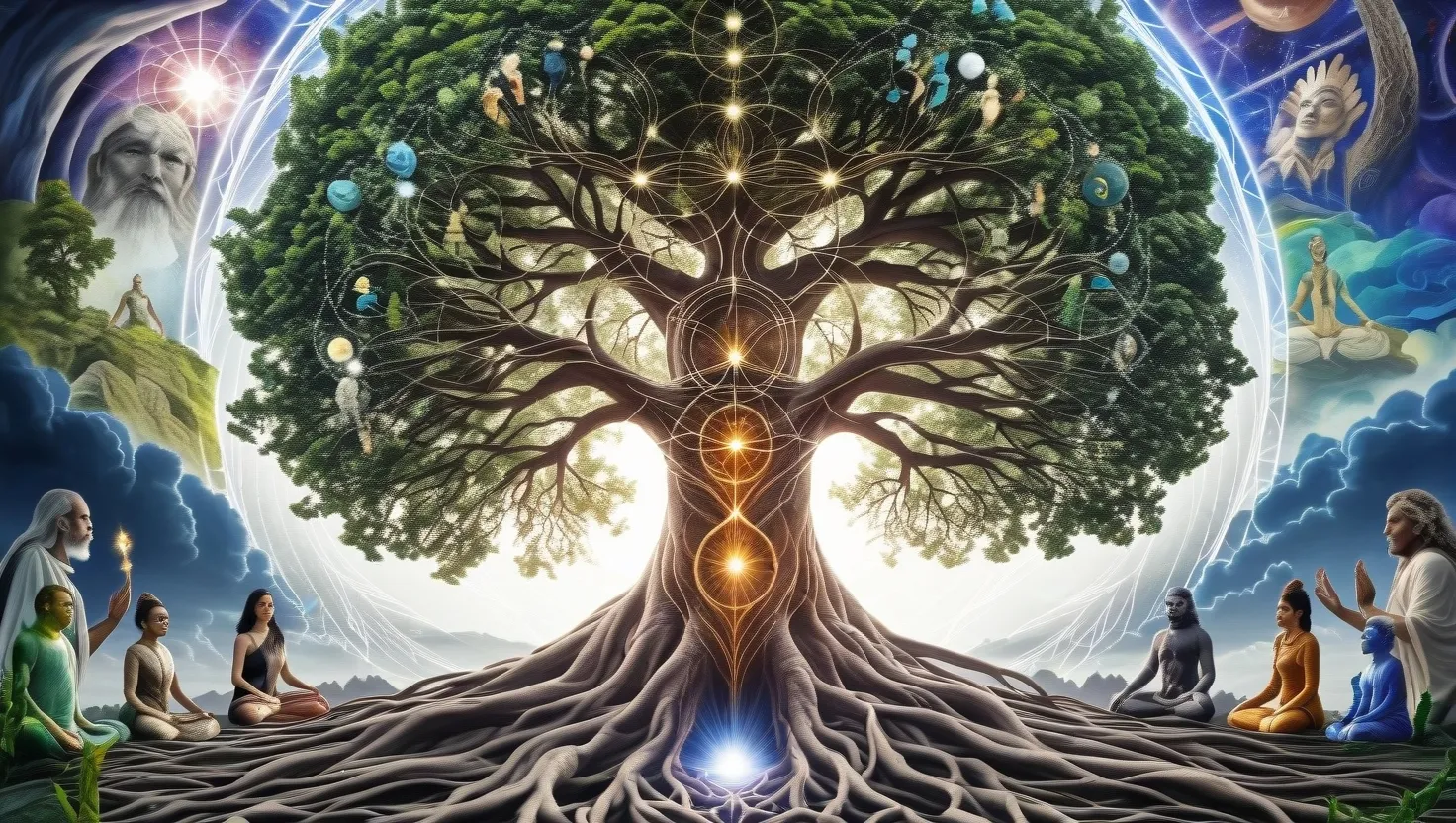As we delve into the profound concept of Nadabrahman, we are invited to experience the universe in a unique and captivating way – as a grand symphony of divine vibration. This idea, deeply rooted in Vedic philosophy, particularly in the Upanishads and the Sama Veda, presents sound not just as a physical phenomenon, but as the very essence of creation.
At the heart of this philosophy lies the belief that the cosmos is manifested through vibrations, with sound being the fundamental creative force. The term “Nadabrahman” itself translates to “Sound is God,” emphasizing that sound is not merely a manifestation of the divine, but the divine itself. This concept is beautifully encapsulated in the Sama Veda, where chanting is not just an artistic endeavor, but a sacred practice that transcends linguistic comprehension and elevates the listener to a state of spiritual receptivity.
The idea that sound is the primordial force behind creation is echoed in the concept of the eternal sound, or “Nada Brahma.” This eternal sound is believed to be the vibration that underlies all existence, a vibration so subtle and high in frequency that it is beyond human perception. However, through practices like Nada Yoga, one can tune into this cosmic vibration. Nada Yoga involves the conscious use of sound vibrations, such as chanting and the use of musical instruments, to connect with this eternal sound and achieve a state of cosmic consciousness.
One of the key aspects of Nadabrahman is the concept of “Anahata Nada,” or the unstruck sound. This is a mystic sound that is not produced by any physical means but is heard spontaneously during deep meditation. It is a sign of the purification of the nadis, or astral currents, and indicates a high level of mental purity and concentration. This sound is considered the sound of the divine, emanating from the heart center, and is a crucial part of the spiritual journey in Nada Yoga.
The practice of chanting, particularly the sacred syllable AUM (or Om), plays a significant role in connecting with Nadabrahman. AUM is considered the primordial sound, the closest to the true nature of the cosmic vibration. Chanting AUM is believed to align the individual with the universal rhythm, establishing a profound connection between the self and the cosmic sound. This alignment is not just theoretical; it has practical implications for spiritual growth and self-realization.
In the context of spiritual practices, Nadabrahman influences various forms of worship and meditation. For instance, “Nadopasana” is the practice of using music as a medium to worship God. Here, music is not just a form of entertainment but a powerful tool to connect with the divine. The great composer Tyagaraja, for example, saw music as a manifestation of God and used it to expound spiritual truths in his compositions.
The concept of Nadabrahman also bridges the gap between manifest sound and unmanifest consciousness. It suggests that all existence is an expression of cosmic melody, where every atom, every vibration, contributes to the grand symphony of the universe. This understanding is reflected in the ancient Greek concept of the “Music of the Spheres,” where the cosmos is seen as constructed according to musical intervals and proportions. Similarly, in various spiritual traditions, from Hinduism to Sikhism and Native American beliefs, there is a common thread of recognizing a universal sound or tone that underlies all creation.
To fully appreciate the power of Nadabrahman, one must engage in practices that allow for deep listening and attunement to the eternal sound. Meditation on Nadabrahman involves listening to both external and internal sounds without attachment. This practice encourages an exploration of the subtleties within the cosmic resonance, inviting a transformative understanding of the universe. For instance, the act of listening to the sound of a stringed instrument or any other musical instrument with total attention can lead to absorption in the all-pervading stillness, as suggested in the Vijnana Bhairava Tantra.
The influence of Nadabrahman extends beyond spiritual practices to our everyday lives. In a world filled with noise and chaos, the wisdom of the Sama Veda offers a timeless remedy. The rhythmic cadence of its chants provides a pathway to inner peace and heightened awareness. By surrounding ourselves with harmonious sounds, we can counteract the dissonance that often pervades our lives. This is why the practice of chanting, inspired by the Sama Veda, has found resonance in various spiritual traditions and even in modern music therapy and meditation practices.
The personal journey into Nadabrahman is deeply transformative. It beckons individuals to move beyond the superficial realm of audible sound and explore the subtleties within the cosmic resonance. This journey is not just about hearing sounds; it is about feeling the vibrations that underlie all existence. As we attune ourselves to the universal vibration, we experience a profound sense of harmony and oneness with the cosmos.
In essence, Nadabrahman offers a unique perspective on the nature of reality, one that is both auditory and spiritual. It reminds us that the world is not just a visual spectacle but an ongoing concert of subtle vibrations. By tuning into this cosmic symphony, we gain fresh insights into the power of sound in spiritual awakening and our connection to the cosmic whole.
As we embark on this journey, we are invited to rediscover the sacred in the ordinary, to recognize the divine resonance that echoes through the corridors of our own hearts. The concept of Nadabrahman is a powerful reminder that we are part of a grand symphony, where every being and every element contributes to the eternal and harmonious sound of the universe. Whether you are a music lover, a spiritual seeker, or simply curious about different approaches to understanding existence, this exploration of Nadabrahman promises to attune you to the cosmic symphony playing within and around us.
In the words of ancient seers, the moment we rise to the best in us, we rise to the Self in us, to Brahman, to God himself. This journey into Nadabrahman is a call to rise above the limitations of our little self and connect with the higher Self that resides within us. As we listen to the celestial strains of the cosmic symphony, we are reminded that the universe is a grand, harmonious whole, and we are an integral part of this divine melody.






